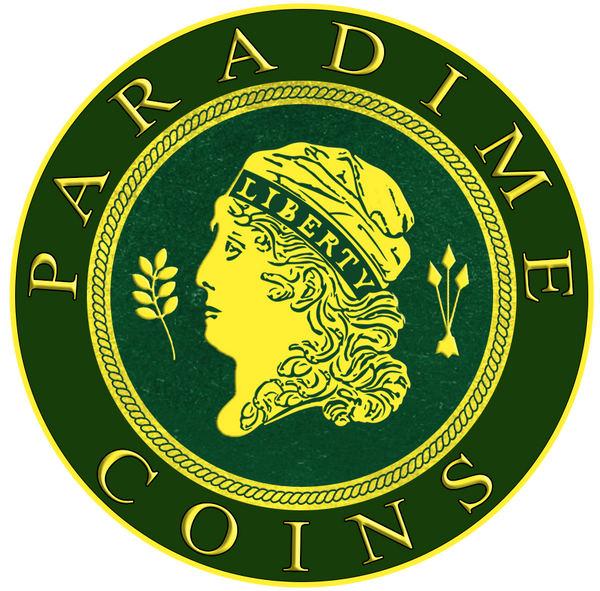A Historical Journey Through the 1795 $5 Gold Coin: Exploring the Small Eagle and Large Eagle Varieties
The 1795 $5 gold coin, often referred to as the Half Eagle, holds a special place in the annals of American numismatics. Struck during the infancy of the United States Mint, this coin is not only a testament to early American craftsmanship but also a symbol of the fledgling nation’s aspirations. Today, the 1795 $5 gold coin is highly sought after by collectors and investors, particularly the two distinctive varieties: the Small Eagle and the Large Eagle designs. Let’s delve into the history, differences, and rarity of these iconic coins.
The Birth of the 1795 $5 Gold Coin
The Half Eagle was among the first gold coins produced by the United States Mint. Authorized by the Coinage Act of 1792, the $5 gold coin was struck beginning in 1795 at the Philadelphia Mint. Designed by Robert Scot, the obverse of the coin features a bust of Lady Liberty donning a soft cap, her hair flowing freely, a depiction emblematic of liberty and freedom. The reverse showcases an eagle, a symbol of strength and independence.
Gold for these coins was supplied by depositors, as the young nation’s monetary system was still in its infancy. The mint’s process was manual, involving labor-intensive methods, which adds to the charm and historical significance of these early coins.
Distinguishing the Small Eagle and Large Eagle Varieties
The Small Eagle Design
The 1795 $5 gold coin initially featured the Small Eagle design on the reverse. This design depicts a delicate and somewhat scrawny eagle with wings outstretched, perched on a cloud, and encircled by a wreath. This design was relatively short-lived, minted only in 1795 and part of 1796.
The Small Eagle design reflects the mint’s early experimentation with coin artistry and functionality. Despite its historical importance, the design was criticized for its perceived lack of majesty and durability. Over time, the delicate details of the Small Eagle design were prone to wear, which makes high-grade examples exceedingly rare today.
The Large Eagle (Heraldic Eagle) Design
In 1795, the U.S. Mint transitioned to the Large Eagle design, also known as the Heraldic Eagle. This design features a bold and imposing eagle inspired by the Great Seal of the United States. The eagle holds an olive branch and arrows, symbolizing a balance between peace and readiness for war. Above the eagle is a cluster of stars and a banner inscribed with “E PLURIBUS UNUM.”
The Large Eagle design is more detailed and reflects the nation’s desire to project strength and unity. Although introduced in 1795, the Large Eagle design became more prominent in subsequent years, making examples from 1795 particularly scarce and desirable.
Key Differences Between the Small Eagle and Large Eagle Designs
-
Reverse Design:
- Small Eagle: Features a delicate eagle surrounded by a wreath.
-
Large Eagle: Depicts a heraldic eagle with outstretched wings, holding an olive branch and arrows.
-
Mintage:
-
The Small Eagle variety was produced in larger numbers during 1795, while the Large Eagle variant from the same year had a much smaller mintage, increasing its rarity.
-
Rarity and Collectibility:
- High-grade Small Eagle coins are extremely rare due to wear and the limited production span.
-
Large Eagle coins from 1795 are rarer in any grade, given their limited production during the transition.
-
Historical Significance:
-
The Small Eagle represents the early experimental phase of U.S. coinage, while the Large Eagle reflects a more mature and enduring design.
Rarity and Market Value
Both varieties of the 1795 $5 gold coin are rare and highly coveted by collectors. However, the Large Eagle variety commands a premium due to its limited mintage and historical significance as a transitional design. Prices for these coins can vary significantly depending on their condition, with high-grade examples fetching substantial sums at auction.
Surviving Populations
- It is estimated that fewer than 1,000 Small Eagle specimens exist today, with fewer still in mint-state condition.
-
The Large Eagle variety is even scarcer, with surviving populations estimated in the low hundreds, making it a true treasure for collectors.
Why Collectors Treasure the 1795 $5 Gold Coin
For numismatists and investors, the 1795 $5 gold coin offers a rare glimpse into America’s past. Each coin tells a story of a young nation striving to establish its identity and economic stability. The craftsmanship, historical context, and rarity of these coins make them a cornerstone of any serious collection.
ParadimeCoins.com: Your Trusted Source for Rare U.S. Coins
At ParadimeCoins.com, we specialize in offering certified rare U.S. coins, including iconic pieces like the 1795 $5 gold coin. Whether you are a seasoned collector or new to numismatics, our curated selection ensures you have access to some of the most extraordinary coins in history. Explore our inventory today and own a piece of America’s heritage.





